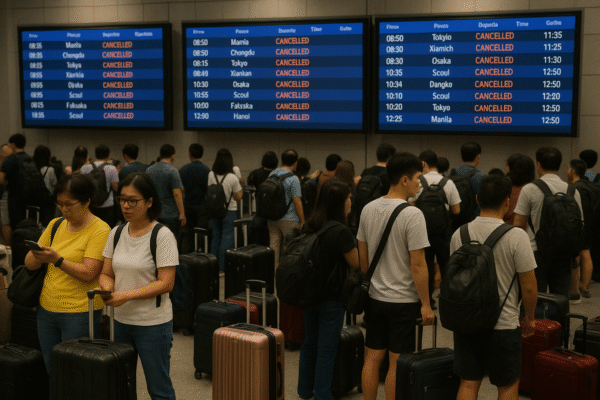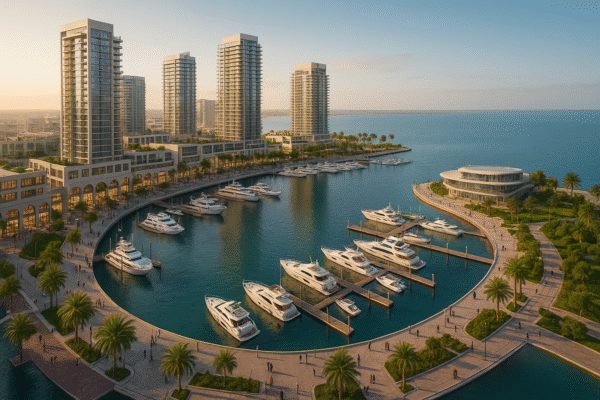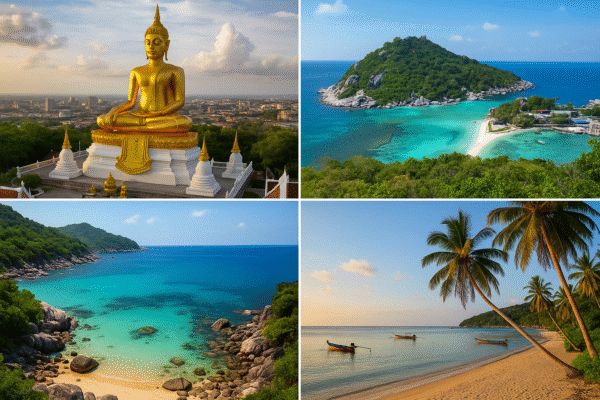Thailand’s Booming 2025 Tourism Spurs Investment in Hat Yai, Ko Tao, and Ko Pha-ngan
Thailand’s tourism sector is roaring into 2025 with renewed vigor, drawing global attention beyond its traditional hubs like Bangkok and Phuket. Emerging destinations such as Hat Yai, Ko Tao, and Ko Pha-ngan are fast becoming the country’s new tourism and investment frontiers, driven by robust government initiatives, expanding air connectivity, and a global appetite for extended and experience-rich travel.
According to the Tourism Authority of Thailand (TAT), over 16 million international tourists visited the country in the first half of 2025 alone, contributing more than USD 23 billion to the economy. As Thailand targets 35 million foreign arrivals this year under the “Amazing Thailand Grand Tourism and Sports Year 2025” campaign, secondary destinations are benefiting from overflow demand — and presenting new opportunities for savvy investors.
Hat Yai: Southern Gateway for Trade and Tourism
Strategically located in Songkhla Province near the Malaysian border, Hat Yai has transitioned from a commercial hub into a promising leisure and MICE (Meetings, Incentives, Conferences, and Exhibitions) destination. With Hat Yai International Airport now serving more direct regional flights — especially from Malaysia and Singapore — the city is witnessing a rise in short-stay tourists and cross-border shoppers.
Investment demand is rising in budget hotels, serviced apartments, and co-living developments. According to the Real Estate Information Center (REIC) of Thailand, Hat Yai’s residential property prices have increased by 12% year-on-year. With a growing student population, healthcare tourists, and regional business travelers, the city is well-positioned for mid-tier hospitality and affordable housing projects targeting long-stay markets.
Ko Tao: Dive Capital Now Aiming for Wellness & Luxury
Known globally for its coral reefs and scuba diving certifications, Ko Tao — located in Surat Thani province — is evolving beyond backpacker tourism. Boutique eco-resorts, holistic wellness retreats, and digital nomad enclaves are driving the island’s transformation into a premium leisure destination.
Occupancy rates reached 82% in the first half of 2025, and average nightly rates rose by 7% over the previous year. The Ministry of Tourism and Sports has endorsed sustainable practices on the island, with efforts to regulate dive site capacity and support green tourism certification.
Investment opportunities include premium villas, health-oriented accommodations, and remote-work facilities. Limited land availability heightens the appeal of early entry and joint ventures with local developers to secure scenic plots near Ao Leuk, Sairee Beach, and Tanote Bay.
Ko Pha-ngan: From Full Moon to Full-Service Destination
Famed for its iconic Full Moon Parties, Ko Pha-ngan is undergoing a diversification shift. Today’s visitors range from high-end wellness seekers to European families and Asian retirees. The island’s dual identity — blending festive energy with secluded beaches — makes it ideal for both budget and luxury investment strategies.
Luxury property inquiries rose by 15% in the first half of 2025, particularly from South Korean and Japanese investors. Developers are launching projects that mix upscale beachfront villas with wellness centers and yoga retreats. Meanwhile, affordable hostels and experiential stays continue to cater to digital nomads and eco-conscious millennial travelers.
New ferry routes and upgraded jetties are improving access from Ko Samui and the mainland, supporting regional multi-island travel packages. With strong occupancy across all price tiers, Ko Pha-ngan offers investors the chance to develop a range of hospitality assets and capture diverse traveler segments.
Government-Led Growth and Visa Incentives
The Thai government’s multi-pronged strategy is fueling this tourism surge. Recent visa waivers for Chinese, Russian, Kazakhstani, and Indian travelers have simplified travel access. South Korean tourists, who now average 14-day stays, are responding positively to these changes.
The “Workation Paradise” initiative — launched by the TAT — is positioning Thailand as a global remote work haven. Infrastructure enhancements, including fiber-optic expansion and relaxed zoning laws for mixed-use properties, support digital nomad-friendly real estate investments in secondary destinations.
Thailand’s Board of Investment (BOI) also offers incentives for sustainable development, eco-tourism infrastructure, and digital infrastructure investments — particularly in less developed provinces.
Strategic Investment Approaches
Investors can pursue region-specific strategies:
- Hat Yai: Mid-tier business hotels, co-living spaces, and serviced apartments near transit hubs and universities.
- Ko Tao: Eco-luxury resorts, dive academies, and health-retreat properties with long-stay visa packages.
- Ko Pha-ngan: Boutique resorts, event venues, and wellness-villa hybrids that leverage the island’s mixed visitor demographics.
Risk and Sustainability Considerations
While the upside is compelling, investors should be mindful of sustainability risks. Islands like Ko Tao and Ko Pha-ngan face ecological challenges from tourism pressure. Supporting sustainable development practices — such as water recycling, solar energy integration, and responsible waste management — will be crucial to long-term profitability and community acceptance.
Additionally, evolving tourism laws — including short-term rental caps — may affect ROI models. Experts recommend a diversified approach incorporating both short- and long-term accommodations to weather potential regulatory shifts.
The Time to Act is Now
Thailand’s emerging tourism boom is not a fleeting trend — it’s a structural transformation. The success of Hat Yai, Ko Tao, and Ko Pha-ngan signals a broader shift in traveler preferences toward authenticity, wellness, and affordability. With high inbound demand and government backing, these destinations offer lucrative potential for investors who act early.
As Thailand redefines itself as more than a mass-tourism giant, these once-overlooked gems are lighting the way to the nation’s next tourism chapter — one of sustainability, diversification, and inclusive economic opportunity.
For more travel news like this, keep reading Global Travel Wire



















